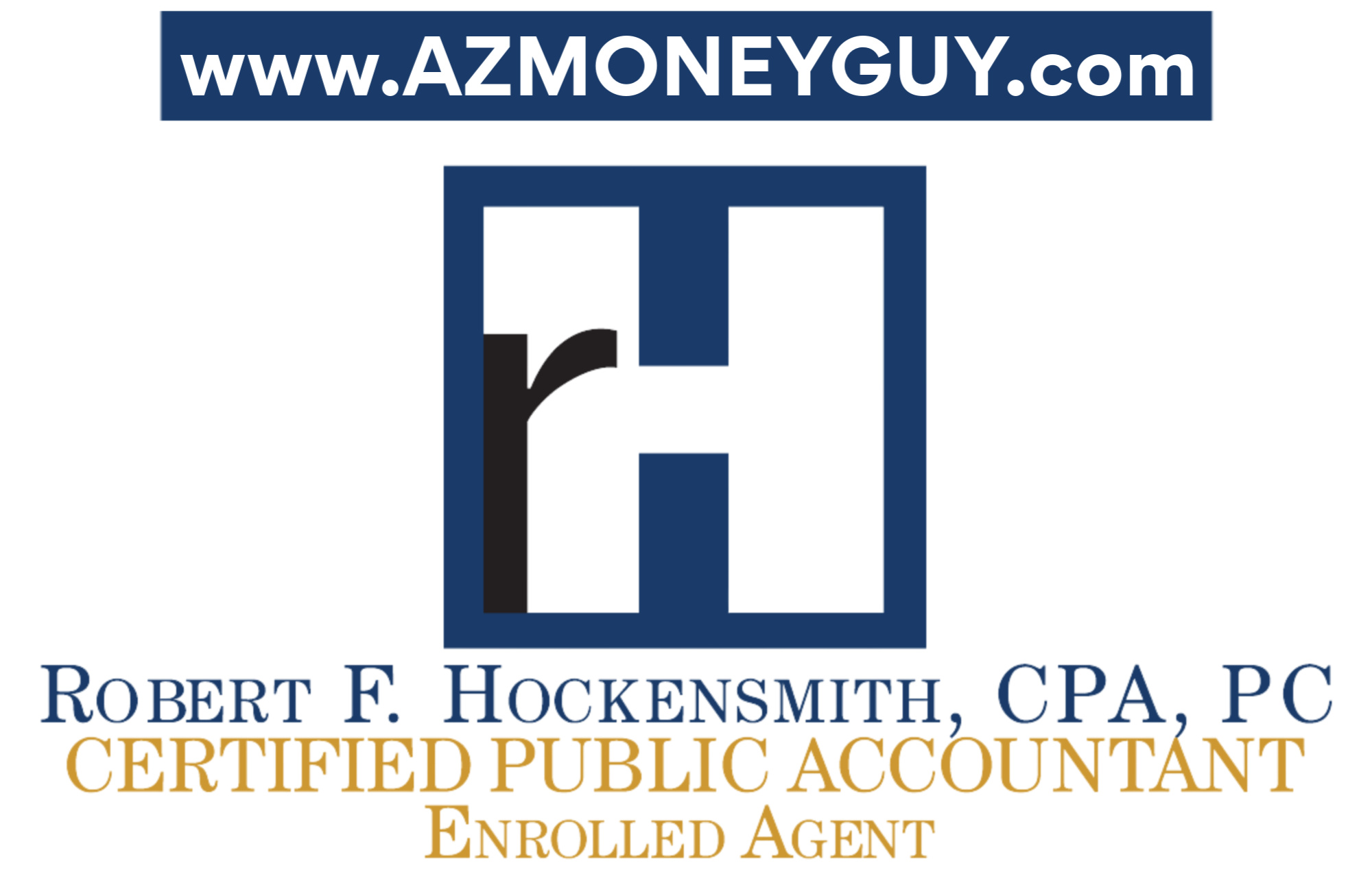Learn how to pass on more of your wealth to your heirs and pay less to the government before it's too late! Click here...
Address & Map
(602) 264 - 9331
CLIENT PORTAL
Address & Map
(602) 264-9331

Tax Tips for New Businesses and Self-Employed Taxpayers
Josephine perfected the art of baking. Her cookies, cakes and pies were always a hit amongst
friends and family who persuaded her to take it up professionally. Encouraged by them,
Josephine started a bakery specializing in hand-made and hand-crafted products. While her
venture was a success, because the result was baked with love, what she was struggling with was
understanding her tax dues.
America is a free country, promoting entrepreneurial growth, even more so with the current tax
laws. So, if you start a business, like Josephine, you need to know about your federal tax
obligations and opportunities that are available. You may need to know not only about income
taxes but also about payroll taxes.
Here are five basic tax tips that can help get your business off to a good start:
1. Business Structure.
As you start out, you’ll need to choose the structure of your business. Some common types
include sole proprietorship, partnership and corporation. You may also choose to be an S
corporation or Limited Liability Company (LLC). You’ll report your business activity using
the IRS forms which are right for your business type.
2. Business Taxes.
There are four general types of business taxes. They are income tax, self-employment tax,
employment tax and excise tax. The type of taxes your business pays usually depends on
which type of business you choose to set up. You may need to pay your taxes by making
estimated tax payments.
3. Employer Identification Number (EIN).
You may need to get an EIN for federal tax purposes. Search “do you need an EIN” on
IRS.gov to find out if you need this number. If you do need one, you can apply for it online,
and it’s free to do so, if you do it yourself. You must apply online, Monday through Friday
and be sure to do so, 8am – 5pm Eastern Time (ET).
4. Accounting Method.
An accounting method is a set of rules that decide when to report income and expenses. Your
business must use a consistent method. The two that are most common are the cash method
and the accrual method. Under the cash method, you normally report income in the year that
you receive it and deduct expenses in the year that you pay them. Under the accrual method,
you generally report income in the year that you earn it, (regardless of how long it takes for
clients to pay you) and deduct expenses in the year that you incur them (regardless of how
long it takes for you to pay vendors). This is true, even if you receive the income or pay the
expenses in a future year.
5. Employee Health Care.
The Small Business Health Care Tax Credit helps small businesses and tax-exempt
organizations pay for health care coverage they offer their employees. A small employer is
eligible for the credit if it has fewer than 25 employees who work full-time, or a combination
of full-time and part-time. Beginning in 2014, the maximum credit is 50 percent of premiums
paid for small business employers and 35 percent of premiums paid for small tax-exempt
employers, such as charities since 2017, employers employing at least a certain number of
employees (generally 50 full- time employees or a combination of full-time and part-time
employees that is equivalent to 50 full-time employees) will be subject to the Employer
Shared Responsibility provision.
Tips for Self-Employed Taxpayers
If you are an independent contractor or run your own business, there are a few basic things to
know when it comes to your federal tax return.
Here are some tips from the IRS, you should know about income from self-employment:
1. Self-employment income can include income you received for part-time work. This is in
addition to income from your regular job.
2. You must file a Schedule C, Profit or Loss from Business, or Schedule C-EZ, Net Profit
from Business, with your Form 1040.
3. You may have to pay self-employment tax as well as income tax if you make a profit. Self-
employment tax includes Social Security and Medicare taxes. Use Schedule SE, Self-
Employment Tax, to figure the tax. Make sure to file the schedule with your tax return.
4. You may need to make estimated tax payments. People typically make these payments on
income that is not subject to withholding. You may be charged a penalty if you do not pay
enough taxes throughout the year.
5. You can deduct expenses you paid to run your trade or business. You can deduct most
business expenses in full, but some must be ’capitalized.’ This means you must depreciate
(write off) the expense over a period of years.
6. You can deduct business costs only if they are both ordinary and necessary. An ordinary
expense is one that is common and accepted in your industry. A necessary expense is one
that is helpful and proper for your trade or business.
7. You may be able to hire your children to help you in your occupation and receive a tax
business deduction for paying them wages to help you. Also, their wages may not be taxable
under certain conditions.
8. You can deduct health insurance premiums (including Medicare) on your personal tax return
without itemizing.
9. You may be eligible for the Qualified Business Income Deduction of up to 20% of your
profits as a business deduction from 2018.
Home Office Deductions
If you work from home, you should learn the rules for how to claim the home office deduction.
Today, a simplified option is available to figure the deduction for business use of your home.
The new choice may save you time because it simplifies how you figure and claim the deduction.
It can also make it easier for you to keep records. It does not change the rules for who may claim
the deduction.
Here are six tips from the IRS about the home office deduction:
1. Generally, to claim a deduction for a home office, you must use a part of your home
exclusively and regularly for business purposes. Also, the part of your home used for
business must be:
o Your principal place of business, or
o A place where you meet clients or customers in the normal course of business, or
o A separate structure not attached to your home. Examples might include a studio, garage to barn.
2. If you use the actual expense method, the home office deduction includes certain costs that
you paid for your home. For example, if you rent your home, part of the rent you paid could
qualify. If you own your home, part of the mortgage interest, taxes and utilities you paid
could qualify. The amount you can deduct usually depends on the percentage of your home
used for business.
3. Beginning with 2013 tax returns, you may be able to use the simplified choice to claim the
home office deduction instead of claiming actual expenses. Under this method, you multiply
the allowable square footage of your office by a prescribed rate of $5. The maximum footage
allowed is 300 square feet. The deduction limit using this method is $1,500 per year.
4. If your gross income from the business use of your home is less than your expenses, the
deduction for some expenses may be limited.
5. If you are self-employed and choose the actual expense method, use Form 8829, Expenses
for Business Use of Your Home, to figure the amount you can deduct. You claim your
deduction on Schedule C, Profit or Loss from Business, if you use either the simplified or
actual expense method. See the Schedule C instructions for how to report your deduction.
6. If you are an employee, you must meet more rules to claim the deduction. For example, in
addition to the above tests, your business use must also be for your employer’s convenience.
Call today, don’t delay! See how this affects you. We can be reached at 602-264-9331 and on all social media under azmoneyguy.
Related Blog Posts
Money Savings and Tax Tips for the Holidays
Learn how to pass on more of your wealth to your heirs and pay less to the government before it's too late! Click here...Address & Map(602) 264 - 9331CLIENT PORTALAddress & Map(602) 264-9331[DISPLAY_ULTIMATE_SOCIAL_ICONS] The Holiday Season is finally...
WHAT TO DO IF YOU WIN THE LOTTERY OR BIG IN VEGAS?
Learn how to pass on more of your wealth to your heirs and pay less to the government before it's too late! Click here...Address & Map(602) 264 - 9331CLIENT PORTALAddress & Map(602) 264-9331[DISPLAY_ULTIMATE_SOCIAL_ICONS] “Someday . . . if I win the...
Military Tax Benefits
Learn how to pass on more of your wealth to your heirs and pay less to the government before it's too late! Click here...Address & Map(602) 264 - 9331CLIENT PORTALAddress & Map(602) 264-9331[DISPLAY_ULTIMATE_SOCIAL_ICONS] You have sacrificed your youth,...
Do You Owe The IRS?
Learn 5 Secrets The IRS Doesn’t Want You To Know.
Click on the button below to get FREE access to this exclusive content.
Get Expert Tax Advice from an expert
Mr. Hockensmith has been a guest newscaster for national and local TV stations in Phoenix since 1995, broadcasting financial and tax topics to the general pubic. He has written tax and accounting articles for both national and local newspapers and professional journals. He has been a public speaker nationally and locally on tax, accounting, financial planning and economics since 1992. He was a Disaster Reservist at the Federal Emergency Management Agency, for many years after his military service. He served as a Colonel with the US Army, retiring from military service after 36 years in 2008. Early in his accounting career, he was a Accountant and Consultant with Arthur Andersen CPA’s and Ernst & Young CPA’s.








